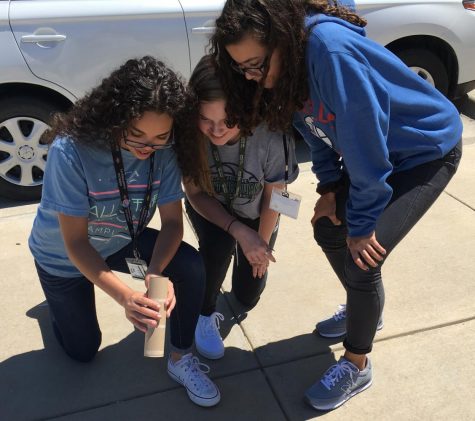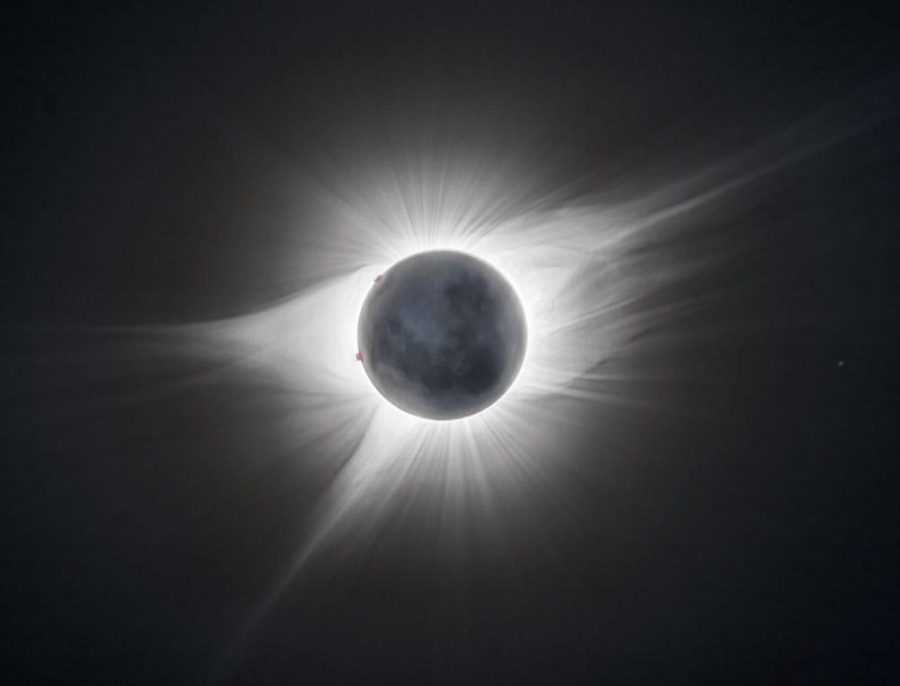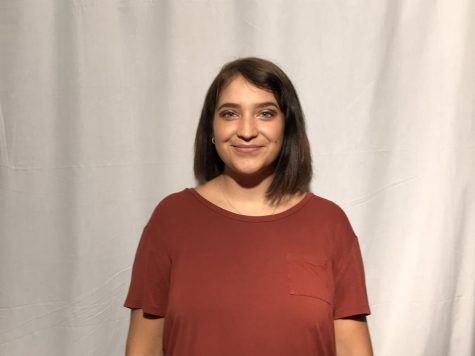The Solar Eclipse in a New Millenium
Picture of the eclipse taken with Mr. Ballauer’s telescope
Day turned into night and as the sunlight returned, it scattered the earth in sepia tones, a sight that was hard to resist. Millions of people across the United States picked up their phones and aimed them towards the skies to witness a contiguous solar eclipse for the first time in 38 years.
The whole event only lasted a little over two hours in the afternoon on August 21st, with a peak of just about two minutes. In Mansfield, Texas, the eclipse wasn’t even viewable in its totality phase. Even so, people are still fascinated by what is happening during a Solar Eclipse.
“The new moon is directly between the sun and earth. We are seeing the shadow being cast by the moon,” said Lake Ridge High School Astronomy teacher, Jennifer Faulkner.
Solar Eclipses aren’t as uncommon as people think they are. Every 18 months a Solar Eclipse occurs and is viewable somewhere on earth. But sharing an eclipse with everyone across the country is a unique experience. Faulkner remembered being in middle school the last time there was an eclipse viewable in the United States.
“It wasn’t as full scale as this past eclipse, but I do remember the weathermen and news anchors reporting on how to watch it,” said Faulkner.
For the 2017 viewing, Coach Faulkner used eclipse glasses that are protective against Ultraviolet and Infrared radiation that she acquired on her trip to the Nasa Langley Research Center this past summer. She used the lenses to take a photo of the eclipse through her phone. Faulkner even believes that an event as unique as a Solar Eclipse might be able to make a change in students’ tech-connected lifestyles.
“I definitely saw many that were engaged and enjoying the event. I was glad to share that with them too. Originally, I was going travel to be closer to totality, but I am glad I stayed to see what occurred here at Lake Ridge. It may have turned a few students on to science and maybe they will become more aware of other astrological events,” Faulkner said.
Nowadays, students aren’t sharing that interest like they were 38 years ago. Some are choosing to view the eclipse by watching live-streams or looking at pictures taken from friends’ phones instead of going outside themselves. Jasmine Shands, a Lake Ridge senior Astronomy student, first learned that there was going to be a Solar Eclipse from seeing jokes on Twitter. Still, social media didn’t offer detailed information on what is happening during an eclipse. She still didn’t know until it was the lesson in her Astronomy class the morning of the Solar Eclipse. Shands also found that the event seemed to hold some serious significance for her peers.

Savannah Harris, Lydia Deacon, and Angelique Almgoren taking a peek at the eclipse.
“I think the eclipse did spark some interest in Astronomy and special astronomical events, like comets, for a lot of people,” said Shands.
Shands suggested that students may have gained more interest in the Solar Eclipse because of the casual talk and jokes made about it on social media. In fact, a study by the Pew Research Centered revealed that 62 percent of Americans obtain their news from websites and social media.
While the internet can be a useful tool, not everything on it is always accurate. There have been some discrepancies over whether or not it is safe to view a solar eclipse through a smartphone camera. Apple Inc. claimed that using the camera alone is completely fine. On the other hand, Astronomers and other scientists said that without a filter the sun can damage the camera lens and still has the potential to reflect damaging rays into the viewer’s eyes. Mr. Ballauer, a math teacher at Lake Ridge High School who doubles as an Astronomer, used solar filters to safely view the eclipse when there wasn’t 100 percent coverage. Students may have a fondness for their devices, but unfortunately, they cannot be used for everything.
“The only safe time to watch an eclipse, either with the naked eyes or through a camera or device, is during totality. With proper solar filters, then you can see the sun directly,” explained Ballauer.
Just because the option of getting distracted by a smartphone is present doesn’t mean that Lake Ridge students aren’t interested in the world around them. Much like Shands and Faulkner, Ballauer believes that a unique occurrence like a Solar Eclipse does have the power to strike students with an interest in science and nature.
“It always does. But the thing about a total solar eclipse is that it does much more than that. It actually will change your life. There is nothing comparable; nothing more exciting, exhilarating, or mind-blowing that your two eyes can possibly witness. I traveled to Kentucky to see this one, and we have another coming right over us in April of 2024.”
Students at Lake Ridge High School enjoyed getting the opportunity to see the first adjoining United States Solar Eclipse of the new millennium, no matter how they chose to view it. If they happened to miss it this time, there will be another one in August of 2024 where Texas will be able to witness totality.



